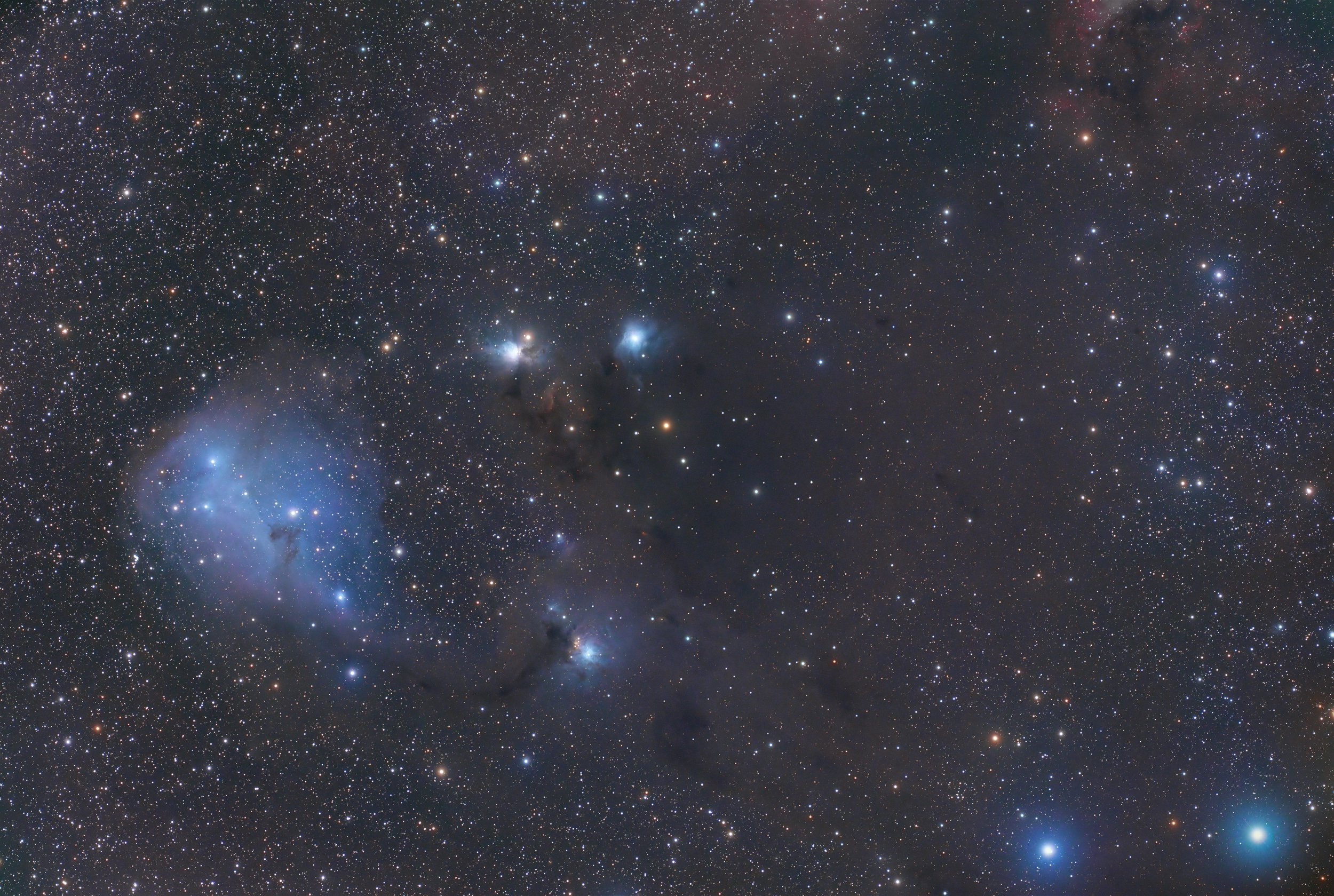
AAPOD2 Image Archives
PK 164+31.1: The Headphone Nebula’s Stellar Finale
PK 164+31.1, commonly known as the Headphone Nebula, is a planetary nebula located approximately 1,600 light-years away in the constellation Lynx. This cosmic remnant marks the final evolutionary phase of a low-to-intermediate mass star, where the star expels its outer layers, leaving behind a hot, dense core—a white dwarf. The nebula’s symmetrical structure, resembling a pair of headphones, consists of ionized gases primarily composed of hydrogen and oxygen. These gases glow as they are energized by the intense ultraviolet radiation emitted by the central white dwarf, which is visible as a faint point of light at the center of the nebula.
Discovered in 1939, the Headphone Nebula is notable for its relatively large size and well-defined structure compared to many other planetary nebulae. The nebula’s intricate patterns are shaped by the interaction of the stellar winds from the progenitor star with the surrounding interstellar medium. As the gas expands outward, it cools and forms complex shells and filaments that trace the final stages of stellar evolution. Studying objects like PK 164+31.1 provides valuable insights into the lifecycle of stars similar to our Sun and the enrichment of the interstellar medium with heavier elements essential for future star formation.
Jones-Emberson 1
Image Description and Details :
Jones-Emberson 1, a.k.a the Headphone Nebula, is a northern planetary nebula. It is also catalogued as PK 164+31.1. It is located about 1600 light years away in Lynx. The red and green glows are mainly due to emissions from hydrogen and oxygen atoms, respectively. The nebula’s brightness is listed as magnitude 14.1, but it is relatively large, so the light is spread out and it has a very low surface brightness.
This image includes galaxies that lie millions of light years away, thousands of times further away than the nebula. Look for streaks and smudges that look obviously different from the sharper, rounder stars.
Acquisition, focusing, guiding and control of Paramount MX mount with TheSkyX. Focus with Optec DirectSync motor and controller. Automation with CCDCommander. Equipment control with PrimaLuce Labs Eagle 3 Pro computer. All pre-processing and processing in PixInsight. Acquired from my SkyShed in Guelph. Minimal moonlight, above average transparency and average or better seeing. Data acquired March 21-April 13, 2021.
Luminance and Narrowband: Sky-Watcher Esprit 150 f/7 refractor and QHY 16200-A camera with Optolong UV/IR, Ha and O3 filters
Chrominance: Takahashi FSQ-106 ED IV @ f/3.6 and QHY367C Pro one-shot colour camera with Optolong UV/IR filter
Narrowband:
Luminance: 32 x 10m = 5hr20m
Ha: 42 x 10m = 7hr00m
O3: 38 x 10m = 6hr20m
Chrominance: 159 x 5m = 13hr15m
Total: 31hr55m
Image scale 1.15 arcsec per pixel (based on Luminance and narrowband resolution)
Copyright: Ron Brecher



